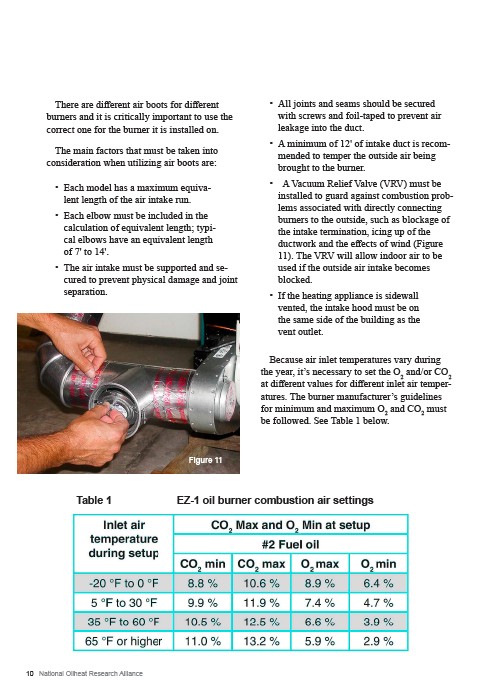
There are different air boots for different
burners and it is critically important to use the
correct one for the burner it is installed on.
The main factors that must be taken into
consideration when utilizing air boots are:
• Each model has a maximum equiva-
lent length of the air intake run.
• Each elbow must be included in the
calculation of equivalent length; typi-
cal elbows have an equivalent length
of 7' to 14'.
• The air intake must be supported and se-cured
to prevent physical damage and joint
separation.
10 National Oilheat Research Alliance
Figure 11
• All joints and seams should be secured
with screws and foil-taped to prevent air
leakage into the duct.
• A minimum of 12' of intake duct is recom-mended
to temper the outside air being
brought to the burner.
• A Vacuum Relief Valve (VRV) must be
installed to guard against combustion prob-lems
associated with directly connecting
burners to the outside, such as blockage of
the intake termination, icing up of the
ductwork and the effects of wind (Figure
11). The VRV will allow indoor air to be
used if the outside air intake becomes
blocked.
• If the heating appliance is sidewall
vented, the intake hood must be on
the same side of the building as the
vent outlet.
Because air inlet temperatures vary during
the year, it’s necessary to set the O2 and/or CO2
at different values for different inlet air temper-atures.
The burner manufacturer’s guidelines
for minimum and maximum O2 and CO2 must
be followed. See Table 1 below.
Table 1 EZ-1 oil burner combustion air settings